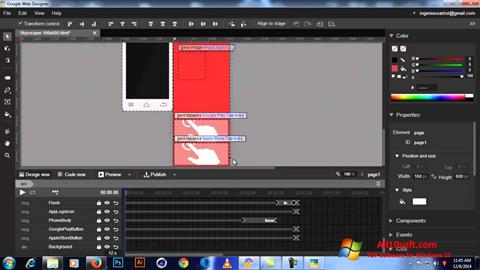
An attractive e-commerce website must not only be visually appealing to its visitors but also convert leads into sales. This article will explore the various aspects and effects of UI/UX on an online store's business side.
UX can be described as the user experience. It encompasses every interaction that a consumer makes with an ecommerce website. It covers all the interactions a user has with the company's products or services. It provides comprehensive information that helps users make the most of their time, from finding what is on the website to ordering and to customer support after they have purchased.

One of the most important aspects of a good UX is the ability to detect and solve technical issues. You can do this by using research tools to find potential pain points such as navigation. These will ensure that users' needs are met. A UX team is able to reduce development costs through extensive user research.
A study by the University of Michigan found that conversion rates for ecommerce sites with a positive user experience increased by 400 percent. This may seem small, but the loss of revenue can add up to thousands of dollars. Clear vision and a solid plan for business can help you build an e-commerce store that is successful and profitable.
A UX includes many other elements, including the best placement of CTAs and how images and text are displayed. A well-designed eCommerce site will always outperform one that is too complex.
Responsive web design provides the best UX for e-commerce websites. This not only improves the user experience but also helps search engines and other website analytics. Furthermore, a mobile-friendly ecommerce website can perform equally well as a desktop site.

A good ecommerce UX also includes the use of technology to improve the shopping experience. One example is a recent study that found that good ecommerce sites can improve their conversion rates by creating a seamless checkout flow that is easy to use.
An entire multi-disciplinary team is required to create an excellent e-commerce UX. An ecommerce UX strategy should include a user-centered approach, which should also consider the main pain points and the e-commerce site's overall brand image. A great UX will ensure your e-commerce store's overall marketing strategy is on track.
While there are many factors to consider when creating an e-commerce UX, it is important to remember that there is a right one for each business. A solid business plan, smart marketing strategies, and a skilled UI/UX designer will help you create an online store that works for you and your customers. Of course, the most important thing to remember is that you must keep the customer in mind at all times.
FAQ
Are I more likely to be hired for a job as a Web Developer if my portfolio is good?
Yes. When you are applying for a job as a web developer or designer, a portfolio is crucial. Your portfolio should include examples of your skills.
Portfolios typically include examples of past projects. These samples can show off your ability to do any task. Include everything: mockups; wireframes; logos; brochures; websites and apps.
What Should I Include in My Portfolio?
These things should make up your portfolio.
-
Examples of your previous work.
-
If you have one, links to it.
-
Your blog may have links
-
These are links to social media sites.
-
Here are links to portfolios online of other designers.
-
Any awards that you have received.
-
References.
-
Samples of your work.
-
These links show how to communicate with clients.
-
Links showing you're willing to learn new technologies.
-
These links show that you are flexible.
-
Links that show your personality
-
Videos showing your skills.
How do you choose a domain name
It is important that you choose a domain name that is memorable. It is essential to have a unique domain name. People will not be able find you when they search your product.
Your domain name should be concise, memorable, unique, relevant, and easy to remember. It is ideal to have something that people can type into their browser.
Here are some tips for choosing a domain name:
* Use keywords related to your niche.
* Avoid hyphens (-), numbers, and symbols.
* Don't use.net or.org domains.
* Do not use words you already know.
* Try to avoid generic terms like "domain" or "website."
* Make sure it's available.
How much do web developers make?
When working on a website for yourself, you'll probably earn around $60-$80 per hour. If you are looking to make more money, it is worth considering becoming an independent contractor. It is possible to charge between $150-200 an hour.
Statistics
- In fact, according to Color Matters, a signature color can boost brand recognition by 80%. There's a lot of psychology behind people's perception of color, so it's important to understand how it's used with your industry. (websitebuilderexpert.com)
- Is your web design optimized for mobile? Over 50% of internet users browse websites using a mobile device. (wix.com)
- It's estimated that in 2022, over 2.14 billion people will purchase goods and services online. (wix.com)
- It enables you to sell your music directly on your website and keep 100% of the profits. (wix.com)
- When choosing your website color scheme, a general rule is to limit yourself to three shades: one primary color (60% of the mix), one secondary color (30%), and one accent color (10%). (wix.com)
External Links
How To
How do I get started as a UI Designer?
There are two paths to becoming a UI design:
-
You can earn a degree in UI Design by going to school.
-
You can become a freelancer.
To be able to enter school, it is necessary to attend college/university and complete four years. This includes art, computer science, business, marketing, psychology, etc.
You can also take classes at community colleges or state universities. Some schools offer free programs, while others charge tuition fees.
After graduating, you'll need to find employment. If you decide to work for yourself, it is important that you build your client base. It is essential to establish a professional network so other professionals know you exist.
Internships are also available at web application development companies. Many companies hire interns before they hire full-time staff.
A portfolio will help you get more work once you have established it. Your work samples, as well details of the projects, should all be part of your portfolio.
It is a good idea for potential employers to receive your portfolio via email.
Market yourself as a freelancer. You can list your services on job boards such Assure, Guru, Freelance, Guru and Upwork.
Freelancers often receive assignments from recruiters who post openings online. These recruiters find qualified candidates for specific jobs.
These recruiters provide candidates with a project description that details the position's requirements.
You are not required to sign long-term contracts as a freelancer. You should negotiate an upfront payment if your goal is to move forward.
Many designers prefer to work directly and not through agencies. Although this might seem like a great idea, many people lack the necessary skills.
Agency workers usually have extensive knowledge about the industry they are working in. They also have access special training and resources that help them produce high-quality work.
Agency workers often receive higher hourly rates in addition to these benefits.
However, the disadvantage of working with an agency is not having direct contact with your employer.
A UI designer must be self-motivated, creative and flexible.
Also, you must have excellent communication skills both verbally and in writing.
UI designers are responsible for designing websites by creating user interfaces (UI) and visual elements.
They are responsible for ensuring the site meets its users' needs.
This includes understanding the information that visitors require and how the site should function.
UI designers use various tools to create wireframes. Wireframing helps them visualize the layout of a page before beginning their designs.
Online wireframe templates make it simple to create your own wireframes.
Some designers only focus on UI design. Others combine UI and graphic design.
Graphic designers use software such as Photoshop to edit images.
Then, they use Adobe InDesign for layout and page design.
Photographers capture images using digital cameras or DSLRs.
The photos are then uploaded into a photo editing program. Here they can add captions, filters, or other effects.
After the shoot, the photographer saves and archives the image in a format compatible with website.
It is important to take into consideration all aspects of the design process when building a website.
This includes research planning, wireframing and prototyping, as well as testing, coding, content generation, and publishing.
Research - Before you start a new project, it's important to do thorough research.
Planning – Once you've done your research, you will want to start developing a plan.
Wireframing is a preliminary sketch for a web page, or application.
Prototyping -- Prototypes allow you to make sure that your final product is exactly what you imagined.
Testing - It is important to test the prototype several times in order to make sure it works.
Coding - Coding refers to the process of writing computer code.
Content Creation - This includes everything from managing social media accounts to writing copy.
Publishing entails uploading files to a server and ensuring the site is accessible.
As a freelance UX/UI designer, you will need to learn about different projects.
One example is that some companies only need wire frames, while others need complete prototypes.
Depending on the type of project you accept, you may be asked to complete specific tasks.
One example is that if you are hired as a wireframe designer, you might be required to create many wireframes.
If you're required to build a complete prototype of a website, you may also be required to design a fully functional version.
It doesn't really matter what project you're working on, good interpersonal skills are vital.
Referring freelancers is the best way to get work. It's important to establish good relationships with potential employers.
Furthermore, you should be able and able to communicate both verbally AND in writing.
A portfolio is an important component of any freelancers' arsenal.
It is a showcase of your work and a demonstration of your ability produce high-quality outputs.
Online portfolios can help you do this.
The best way to get started is to find websites similar to yours.
Then, search these sites to see how each one presents its services.
After identifying the best practices that you believe to be most successful, you can go ahead and implement them.
It is also a good idea to include links in your resume to your portfolio.